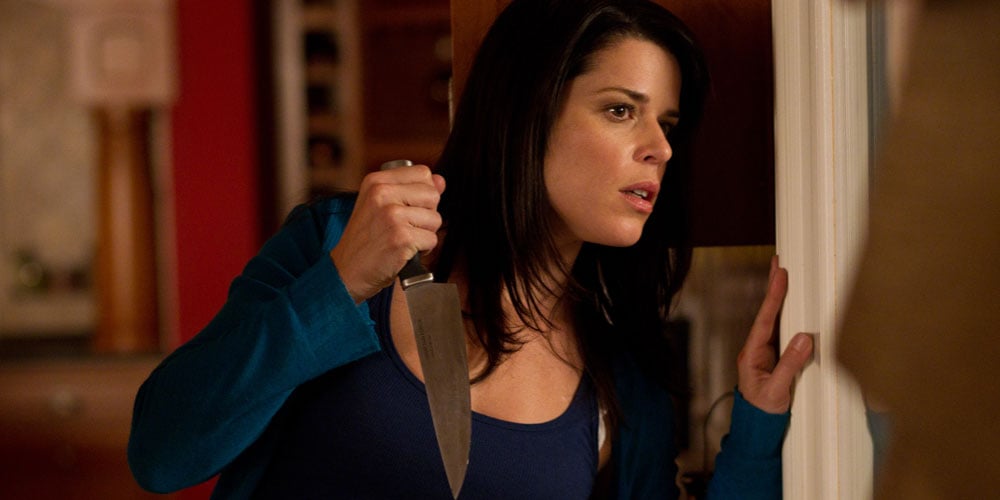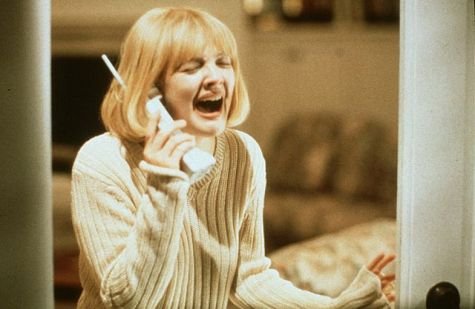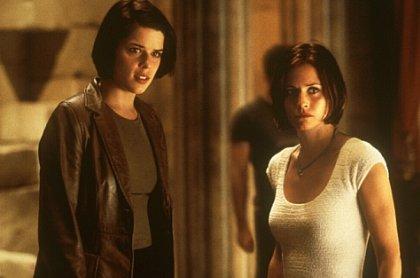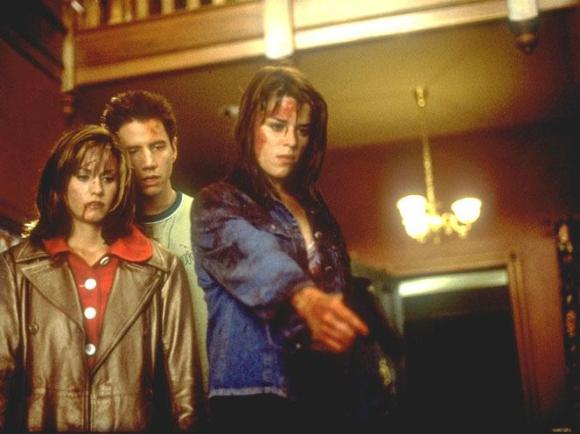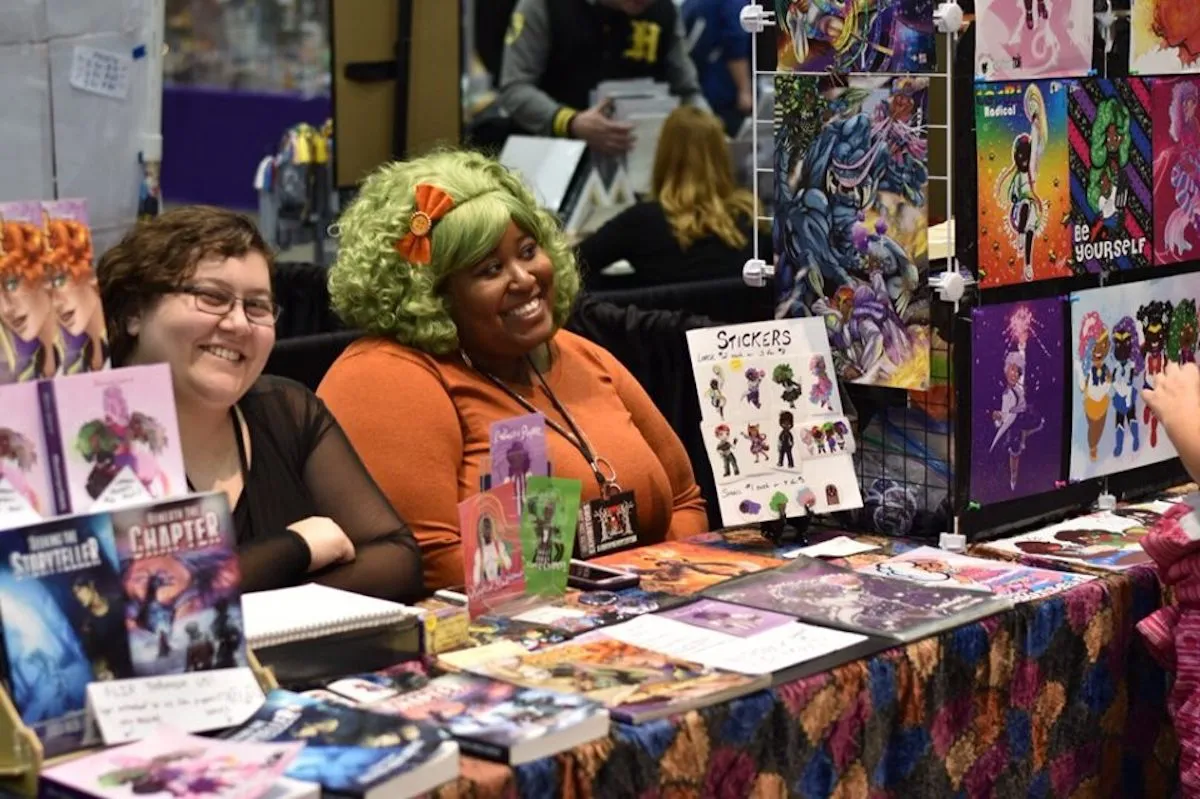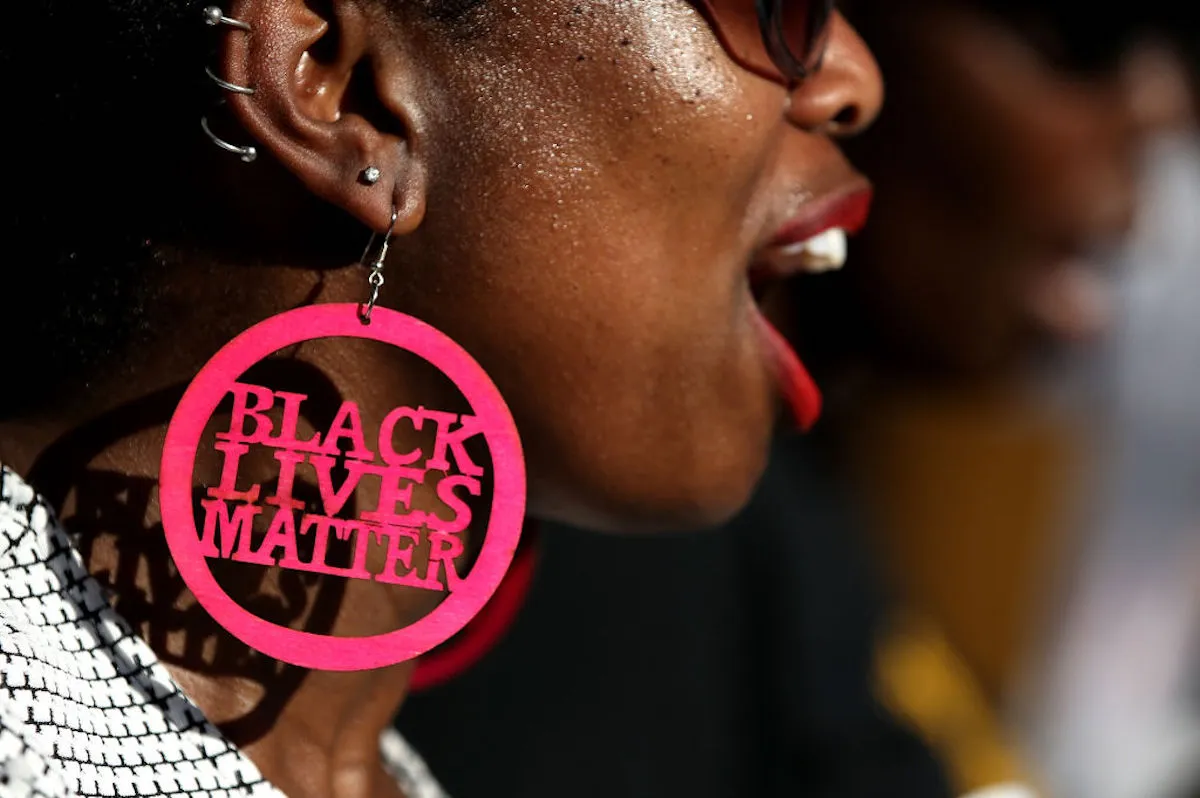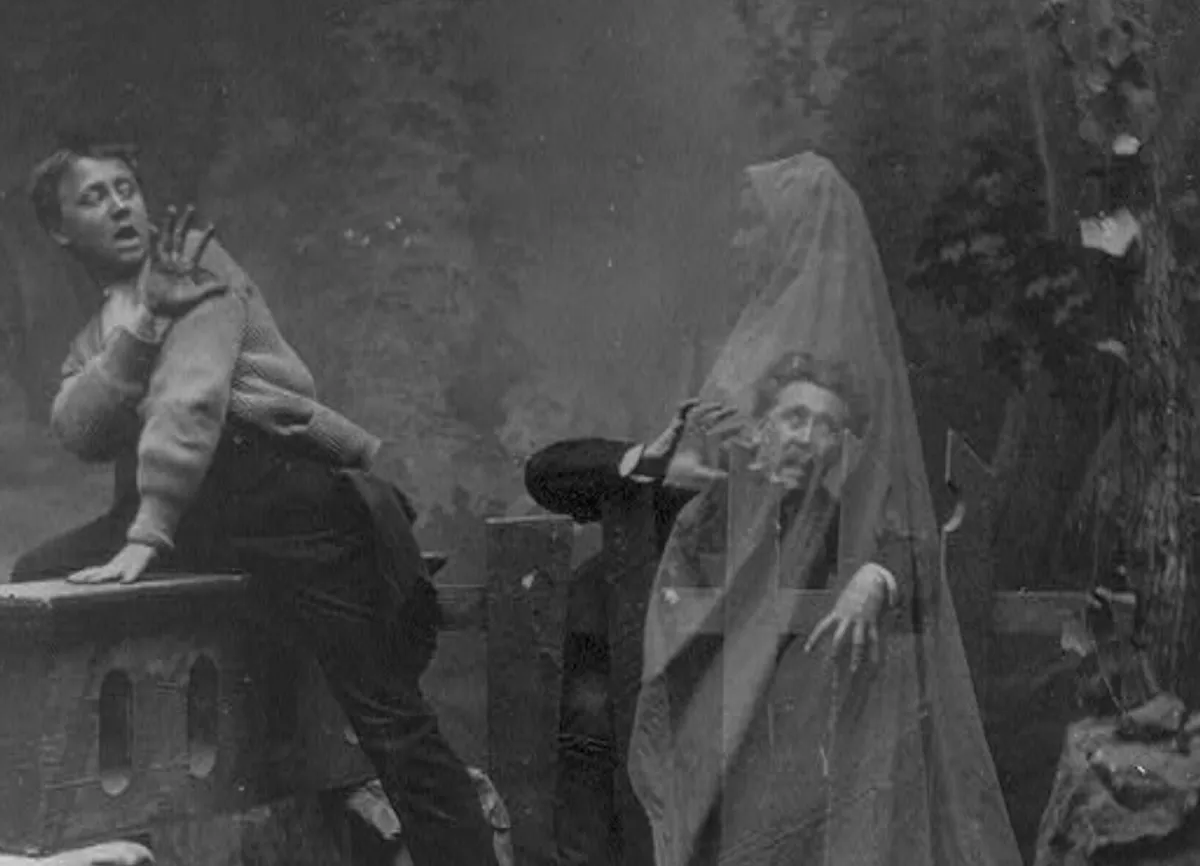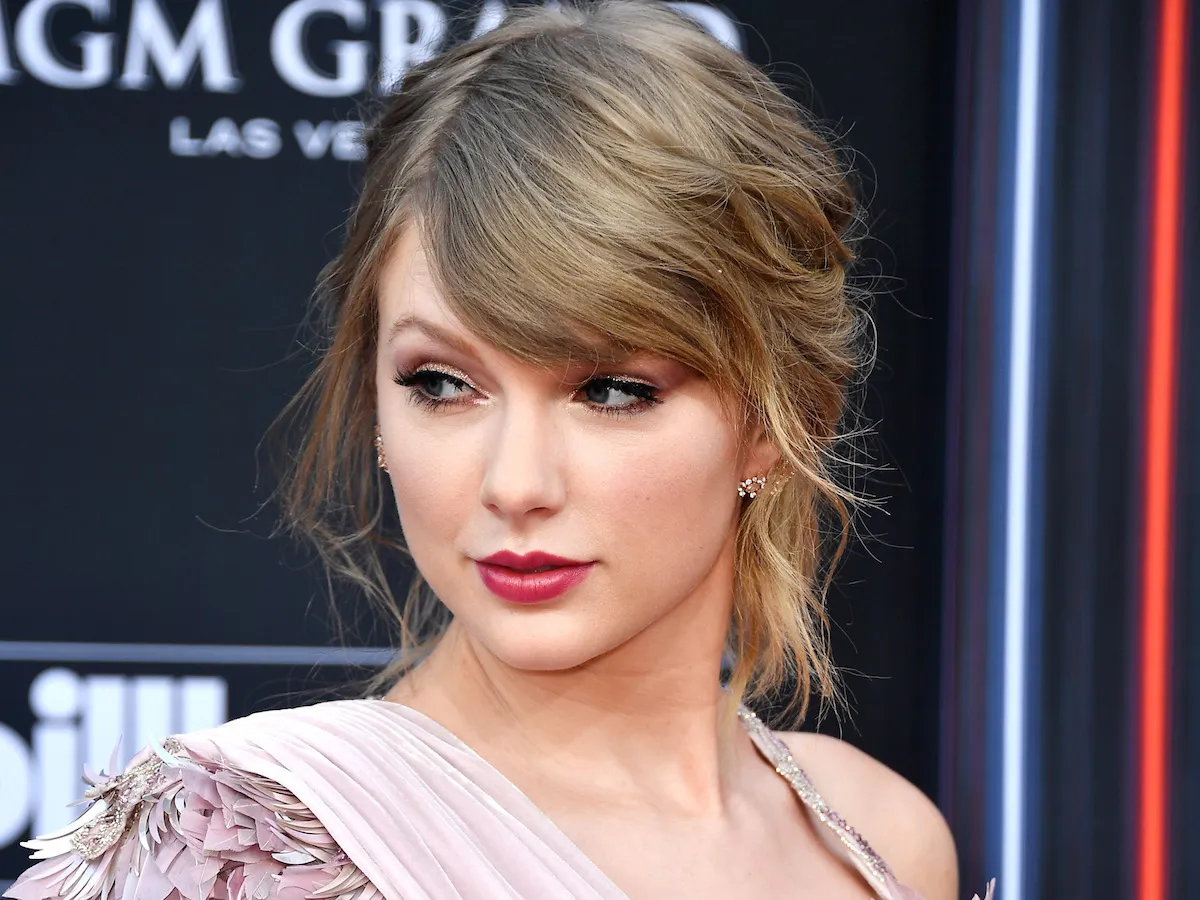Recently on The Awl, Melissa Lafsky said that Scream 4 was the “first mainstream feminist horror movie.” I think that’s a bit short-sighted, considering there were (obviously) three equally feminist-friendly movies before that in the same franchise. Scream was never meant to be a typical horror movie – it was meant to turn the genre upside down.
Be warned, spoilers are included throughout!
Yes, there is the archetype of the “scream queen” in the horror genre. Jamie Lee Curtis (Halloween, Prom Night, Terror Train, The Fog) is one of the most celebrated, up there with Heather Langenkamp (Nightmare on Elm Street), Dee Wallace (Cujo, The Howling, The Hills Have Eyes) and Lee’s own mother, Janet Leigh (Psycho). But while they were major players, even leading roles, they were victims. They weren’t the most “take charge” characters. And even though they (sometimes) survived, there was just something about them that was simply not as strong as the women in the Scream franchise.
Take our heroine, Sidney Prescott (Neve Campbell). When we first meet her as a teenager, she’s still recovering from the murder of her mother a year before. She’s already been a victim of a horrific murder, just indirectly. But she has moved on with her life for the most part, maintained her friends, continued going to school. She just carries scars. And true, Sidney in the first movie is not as tough as the girl in the sequels, but the first movie was where she proved herself.
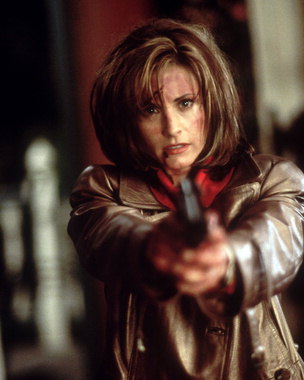 Scream also treats its female characters as more than just a gaggle of pretty targets. As the movie’s resident horror movie geek, Randy (Jamie Kennedy) states it best: Everybody is a suspect. There’s Gale Weathers (Courteney Cox), who is undeniably a cutthroat bitch, but she comes through. She perseveres. And then she capitalizes on it in the sequel, only to go through the same cycle again. But if there’s anything Gale is, it’s strong. Like Sidney, she won’t let herself be a victim while the people around her become less and less trustworthy. (And die.) But strength comes in vulnerability and humanity, and when Gale develops feelings for Dewey (David Arquette), they’re real. She cries when he’s nearly killed, she gets jealous when he’s around other women, but eventually, she chooses to live her life with him. And it’s not as if she retreated or gave up her career – she just evolved. I think that’s a pretty great example of a feminist character. (To say nothing of her being the, ahem, “mature” woman of the series.)
Scream also treats its female characters as more than just a gaggle of pretty targets. As the movie’s resident horror movie geek, Randy (Jamie Kennedy) states it best: Everybody is a suspect. There’s Gale Weathers (Courteney Cox), who is undeniably a cutthroat bitch, but she comes through. She perseveres. And then she capitalizes on it in the sequel, only to go through the same cycle again. But if there’s anything Gale is, it’s strong. Like Sidney, she won’t let herself be a victim while the people around her become less and less trustworthy. (And die.) But strength comes in vulnerability and humanity, and when Gale develops feelings for Dewey (David Arquette), they’re real. She cries when he’s nearly killed, she gets jealous when he’s around other women, but eventually, she chooses to live her life with him. And it’s not as if she retreated or gave up her career – she just evolved. I think that’s a pretty great example of a feminist character. (To say nothing of her being the, ahem, “mature” woman of the series.)
But let’s talk about some of the victims, the live bait for Ghostface who were never really meant to develop as characters. None of them are dumb, that’s for sure. And none of them really do anything that we wouldn’t do in the same situation. When they’re killed, they’re ultimately outsmarted and overtaken physically. But never without a fight. It’s a horror movie. There will be victims. It wouldn’t be a horror movie if no one ever got murdered. (Spectacularly, at that.) But also consider the women playing these roles.
Drew Barrymore, who set the entire franchise in motion with her horrific opening murder scene of the first movie, was already a huge star, a Hollywood legacy. (Post drugs and antics.) She was originally asked to read for the role of Sidney, but then realized the impact of her being whacked in the first gruesome scene. If Drew Barrymore dies, then who’s safe? Nobody. And in that scene, her character, Casey Becker, is a horror movie buff who seems to be in control of the situation until she realized there’s a killer at her doorstep. She doesn’t go down easily, and in the end, Drew Barrymore is treated to one of the goriest, brutal death scenes ever. Not only are celebrities equal opportunity targets, but they won’t be spared an appropriately splattery death. I don’t know about you, but the casting plus the killing is anything but weak. Maybe even empowering.
 The character of Tatum, played by Rose McGowan, was intended to be Scream’s version of the, um, I’ll just call her “The Titty Girl.” She was meant to be the “dumb blonde easy target” whose purpose was to be chased by a killer and ripped to shreds. But she wasn’t. She was too smart for that. Yes, she got a “titty shot,” and that was on purpose. (Because Scream is an extremely self-aware series.) And yeah, her death was caused in part by her not being able to get those boobs through a doggie door in the garage, which could have been her escape. (McGowan later said that she could indeed fit through that doggie door. But alas, that was not Tatum’s fate.) But even before she dies, Tatum has a sharp tongue and can hold her own with all the other characters. She’s a peer, which makes her death even scarier, because she was never a throwaway character. She was Sidney’s best friend, sympathetic, funny, bubbly, and smart. I wouldn’t even call her careless. Ghostface was just a smart killer.
The character of Tatum, played by Rose McGowan, was intended to be Scream’s version of the, um, I’ll just call her “The Titty Girl.” She was meant to be the “dumb blonde easy target” whose purpose was to be chased by a killer and ripped to shreds. But she wasn’t. She was too smart for that. Yes, she got a “titty shot,” and that was on purpose. (Because Scream is an extremely self-aware series.) And yeah, her death was caused in part by her not being able to get those boobs through a doggie door in the garage, which could have been her escape. (McGowan later said that she could indeed fit through that doggie door. But alas, that was not Tatum’s fate.) But even before she dies, Tatum has a sharp tongue and can hold her own with all the other characters. She’s a peer, which makes her death even scarier, because she was never a throwaway character. She was Sidney’s best friend, sympathetic, funny, bubbly, and smart. I wouldn’t even call her careless. Ghostface was just a smart killer.
Scream became notable for its celebrity victims, like Sarah Michelle Gellar, Jada Pinkett Smith, Jenny McCarthy, Jerry O’Connell, and Liev Schrieber. I remember being a teenager, getting on the Internet late at night (when the phones wouldn’t be ringing and I could freely tie up the line on our dialup connection – remember those days?) and looking for who was going to be in the next Scream movie. It was a Thing back then. And I think that for the role of “Scream murder victim” to be so in demand, it wasn’t solely a matter of money and being part of a franchise. It was being part of a great franchise. (And yeah, I’m sure the money was good, too.)
But women are not only the victims, as we know. They are also the killers. In Scream 2, it was Mrs. Loomis (Laurie Metcalf), mother of Billy Loomis (Skeet Ulrich), one of the killers from the original movie. She spent the whole film posing as a local reporter and later revealed herself as one of the two killers, seeking revenge against Sidney for the death of her son and her marriage, which was ruined when her husband had an affair with Sidney’s mother. (The other guy in that movie was merely a publicity whore, which is pretty weak compared to Mrs. Loomis, if you ask me.)
Scream 2 also had the best example ever of how tough and kickass Sidney Prescott is:
“You’re forgetting one thing about Billy Loomis … I fucking killed him.”
But Mrs. Loomis is a kitty-cat compared to the killer in Scream 4. Jill Roberts (Emma Roberts) was a mastermind. A teenage mastermind. Obsessed with fame, attention, and her family’s legacy of murder, she wanted to outshine everyone on the Internet with a Twitter account and really cause a ruckus. So she decided to start copying the Woodsboro murders along with her movie geek friend.
This actually hurt my feelings. Randy was not only an awesome character who made geekdom cool (and useful, really), but for me, he was my introduction to the Hot Geek Boy. He loved Sidney, and if he couldn’t have her, he’d never stop being her friend (or her hero). But he also knew everything. And ultimately he was killed, and it was tragic for everyone. So the fact that the geek was the killer in Scream 4 actually broke my heart. True geeks know where to draw the line.
Anyway, back to Jill. Ruthless. Ruthless to her victims and ruthless to herself. After killing everyone in sight, she had to make it look like she was one too. And she did what any good killer would do to her – she tore out her own hair, fell through a glass table, and stabbed herself. Deep. I’m pretty jaded to crazy horror scenes, but that? That was shocking. In Jess Nevins’ article on female mad scientists, he said that early on, they were depicted as emotional, sympathetic, and passionate. None of those attributes applied to male mad scientists who were cold, calculating, and basically heartless. Like Jill Roberts was.
Indeed, Scream has always portrayed women as forces to be reckoned with, who should in no way be underestimated whether they are being targeted, killed, or killing. Killers and victims -– be afraid … be very afraid!



